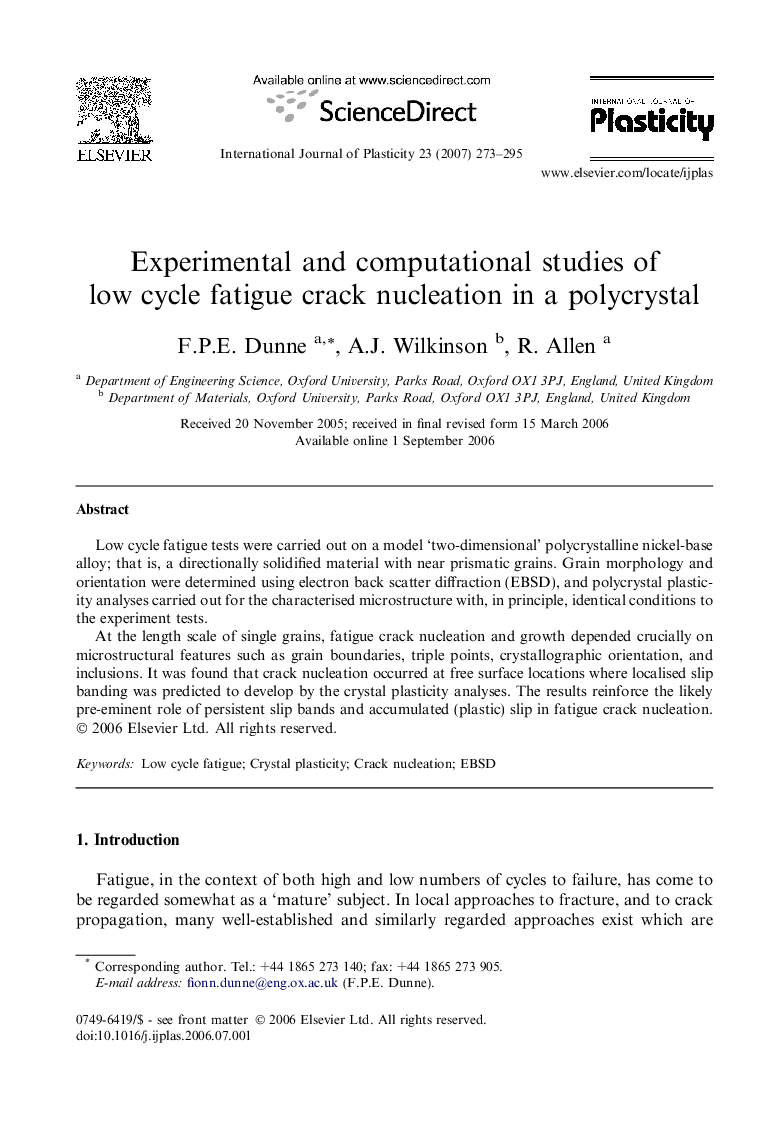| Article ID | Journal | Published Year | Pages | File Type |
|---|---|---|---|---|
| 787757 | International Journal of Plasticity | 2007 | 23 Pages |
Low cycle fatigue tests were carried out on a model ‘two-dimensional’ polycrystalline nickel-base alloy; that is, a directionally solidified material with near prismatic grains. Grain morphology and orientation were determined using electron back scatter diffraction (EBSD), and polycrystal plasticity analyses carried out for the characterised microstructure with, in principle, identical conditions to the experiment tests.At the length scale of single grains, fatigue crack nucleation and growth depended crucially on microstructural features such as grain boundaries, triple points, crystallographic orientation, and inclusions. It was found that crack nucleation occurred at free surface locations where localised slip banding was predicted to develop by the crystal plasticity analyses. The results reinforce the likely pre-eminent role of persistent slip bands and accumulated (plastic) slip in fatigue crack nucleation.
